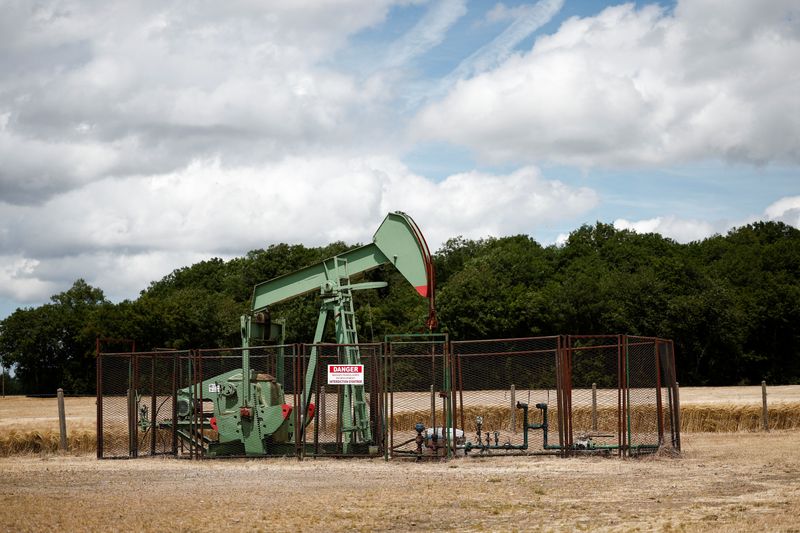Oil set for first weekly gain in three weeks
By Ahmad Ghaddar
LONDON (Reuters) -Oil prices rose more than 1% Friday, heading for their first weekly rise since the end of November, as additional sanctions on Russia ratcheted up supply worries, while a surplus outlook weighed on markets.
Brent crude futures rose 83 cents, or 1.1%, to $74.24 a barrel by 1105 GMT, while U.S. West Texas Intermediate crude was up 86 cents, or 1.2%, at $70.88.
Both contracts are on track for a weekly gain of more than 3% as concerns about supply disruption caused by tighter EU sanctions on Russia and potential similar moves by the U.S., and hopes that Chinese stimulus measures announced this week could lift demand in the world's No. 2 oil consumer support prices.
"The EU's ramping up of sanctions on Russia is still causing bullish reverberations and as the US is making noises in which it might join in, the idea of less Russian oil on the water will remain fresh," PVM oil analyst John Evans said.
European Union ambassadors agreed a 15th package of sanctions on Russia this week over its war against Ukraine, targeting its shadow tanker fleet.
Additionally, Britain, France and Germany told the United Nations Security Council that they are ready - if necessary - to trigger a so-called "snap back" of all international sanctions on Iran to prevent the country from acquiring a nuclear weapon.
Meanwhile, Chinese data this week showed crude imports grew annually for the first time in seven months in November, driven by lower prices and stockpiling.
"We have seen a bit of a recovery in refinery margins since the September lows, but don't think it's anything to justify the November crude import volumes," said Warren Patterson, ING's head of commodities research.
Crude imports by China, the world's largest importer, are set to stay elevated into early 2025 as refiners opt to lift more supply from top exporter Saudi Arabia, drawn by lower prices, while independent refiners rush to use their quota.
The International Energy Agency increased its forecast for 2025 global oil demand growth to 1.1 million barrels per day (bpd) from 990,000 bpd last month, thanks to China's recent stimulus measures, it said in its monthly oil market report.
However, it forecast a surplus for next year, when non-OPEC+ nations are set to boost supply by about 1.5 million bpd, driven by Argentina, Brazil, Canada, Guyana and the United States.
Investors are also betting that the Fed will cut borrowing costs next week and follow up next year with further reductions, after economic data showed weekly claims for unemployment insurance unexpectedly rose.
Source: Investing.com
